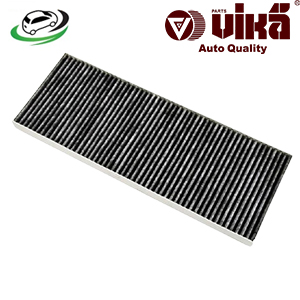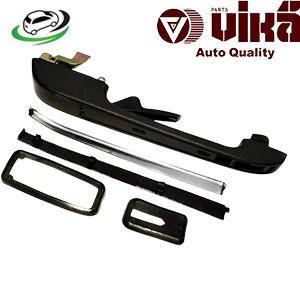-25%
Get Engine Oil Pressure Sensor Switch VW Golf 95-1998/ GTI 95-1998/ Jetta 84-1999/ Jetta GLI 85-1992/ Passat 90-1994 056919081C
The engine oil pressure sensor switch is a critical component in a vehicle’s engine management system. It monitors the oil pressure within the engine and provides essential data to ensure that the engine operates efficiently and safely. This overview covers the function, construction, common issues, maintenance, and benefits of the engine oil pressure sensor switch.
Function of the Engine Oil Pressure Sensor Switch
The primary function of the engine oil pressure sensor switch is to monitor and manage the oil pressure within the engine. Proper oil pressure is vital for engine performance and longevity. The key functions include:
- Monitoring Oil Pressure:
- Pressure Measurement: The sensor switch continuously measures the oil pressure within the engine. It ensures that the oil pressure remains within the manufacturer’s specified range, which is crucial for proper engine lubrication.
- Real-Time Data: It provides real-time data to the engine control unit (ECU) or the vehicle’s dashboard, allowing for immediate responses to changes in oil pressure.
- Warning and Alerts:
- Oil Pressure Light: The sensor switch triggers the oil pressure warning light on the dashboard if the oil pressure falls below a safe level. This alert warns the driver of potential engine problems that need immediate attention.
- Engine Protection: By alerting the driver to low oil pressure, the sensor switch helps prevent severe engine damage that could occur due to inadequate lubrication.
- Engine Performance and Efficiency:
- Lubrication Control: Proper oil pressure is essential for maintaining the correct flow of oil to critical engine components, ensuring effective lubrication and reducing friction.
- Fuel Efficiency: Adequate oil pressure helps maintain optimal engine performance, which can contribute to better fuel efficiency and overall vehicle performance.
- Diagnostics:
- Troubleshooting: The data from the oil pressure sensor switch can be used by mechanics to diagnose engine issues. Low oil pressure readings may indicate problems such as oil pump failure, clogged oil passages, or worn engine bearings.
Construction of the Engine Oil Pressure Sensor Switch
The engine oil pressure sensor switch is constructed from several key components designed to ensure accurate pressure measurement and reliable performance:
- Pressure Sensor Element:
- Pressure Sensing: The core component of the sensor switch is the pressure sensing element, typically made from a piezoelectric material or a strain gauge. This element detects changes in oil pressure and converts them into an electrical signal.
- Material: The sensing element is often made from materials that can withstand high temperatures and pressures, such as stainless steel or specialized alloys.
- Electrical Connector:
- Signal Transmission: The electrical connector is used to transmit the sensor’s output signal to the ECU or the dashboard. It is designed to ensure a secure and reliable connection, preventing signal loss or interference.
- Waterproofing: Connectors are usually sealed to protect them from moisture, dirt, and contaminants that could affect their performance.
- Housing:
- Protective Enclosure: The housing encloses the sensor element and protects it from physical damage and environmental factors. It is typically made from durable materials such as metal or high-strength plastic.
- Mounting: The housing is designed to be securely mounted to the engine block or oil filter, ensuring proper positioning and stability.
- Switch Mechanism:
- Activation: In addition to monitoring pressure, the sensor switch includes a mechanical or electronic switch mechanism that activates the oil pressure warning light when pressure falls below a predetermined threshold.
- Calibration: The switch mechanism is calibrated to trigger at specific pressure levels, ensuring timely alerts for low oil pressure.
Common Issues and Symptoms
Over time, the engine oil pressure sensor switch can experience issues that affect its performance and the engine’s overall operation. Recognizing the symptoms of a faulty sensor switch is crucial for addressing problems promptly:
- Oil Pressure Warning Light:
- Symptom: The oil pressure warning light on the dashboard may illuminate, indicating a potential problem with the oil pressure sensor switch or the engine’s oil pressure.
- Cause: A faulty sensor switch may trigger the warning light even if the oil pressure is normal, or it may fail to activate the light when oil pressure is actually low.
- Erratic or Fluctuating Oil Pressure Readings:
- Symptom: Inconsistent or fluctuating oil pressure readings on the dashboard or diagnostic tools can indicate a malfunctioning sensor switch.
- Cause: A defective sensor switch may provide inaccurate readings, affecting the ability to monitor oil pressure accurately.
- Engine Performance Issues:
- Symptom: Reduced engine performance, such as loss of power or unusual noises, may occur if the oil pressure is not properly regulated.
- Cause: Low oil pressure due to a faulty sensor switch can lead to inadequate lubrication and engine damage, impacting performance.
- Oil Leaks:
- Symptom: Oil leaks around the sensor switch area can be a sign of a faulty or damaged sensor switch.
- Cause: A damaged seal or improper installation may lead to oil leaks, which can affect the sensor’s functionality and overall engine performance.
- Inconsistent Dashboard Readings:
- Symptom: If the oil pressure readings on the dashboard are inconsistent or not matching the actual engine conditions, it may indicate a problem with the sensor switch.
- Cause: Electrical or mechanical issues with the sensor switch can result in unreliable readings.
Maintenance and Replacement
Proper maintenance and timely replacement of the engine oil pressure sensor switch are essential for ensuring accurate oil pressure monitoring and engine protection:
- Regular Inspection:
- Check Interval: Inspect the sensor switch regularly, especially during routine maintenance or oil changes. Look for signs of physical damage, leaks, or corrosion.
- Functional Check: Test the functionality of the sensor switch using diagnostic tools or by observing the oil pressure warning light behavior.
- Replacement:
- When to Replace: Replace the sensor switch if it is faulty, providing inaccurate readings, or causing oil pressure warning light issues. Timely replacement prevents potential engine damage and ensures accurate monitoring.
- Procedure: To replace the sensor switch, locate the sensor on the engine, disconnect the electrical connector, remove the old sensor, and install the new one. Ensure proper sealing and connection to prevent leaks.
- Professional Help:
- Mechanic Assistance: If you are unsure about diagnosing or replacing the sensor switch yourself, consult a professional mechanic. They can provide accurate diagnosis, ensure proper installation, and check for any related issues.
- Use Quality Parts:
- OEM Parts: Use high-quality or OEM (Original Equipment Manufacturer) parts for replacement to ensure compatibility and reliable performance.
Benefits of a Well-Maintained Sensor Switch
Maintaining a functional engine oil pressure sensor switch offers several benefits for vehicle performance and engine longevity:
- Accurate Oil Pressure Monitoring:
- Enhanced Safety: A well-functioning sensor switch ensures accurate monitoring of oil pressure, providing timely alerts for potential issues and protecting the engine from damage.
- Improved Engine Performance:
- Optimal Lubrication: Proper oil pressure monitoring helps maintain effective lubrication of engine components, contributing to smooth operation and optimal performance.
- Preventive Maintenance:
- Avoiding Damage: Regular maintenance and timely replacement of the sensor switch can prevent more significant engine issues, saving on potential repair costs and enhancing overall vehicle reliability.
- Fuel Efficiency:
- Efficiency: Proper engine lubrication, supported by accurate oil pressure monitoring, can contribute to improved fuel efficiency and overall vehicle performance.
- Peace of Mind:
- Reliability: Knowing that the oil pressure sensor switch is functioning correctly provides peace of mind, ensuring that the engine is protected and operating efficiently.
Follow us on Facebook for more parts.





